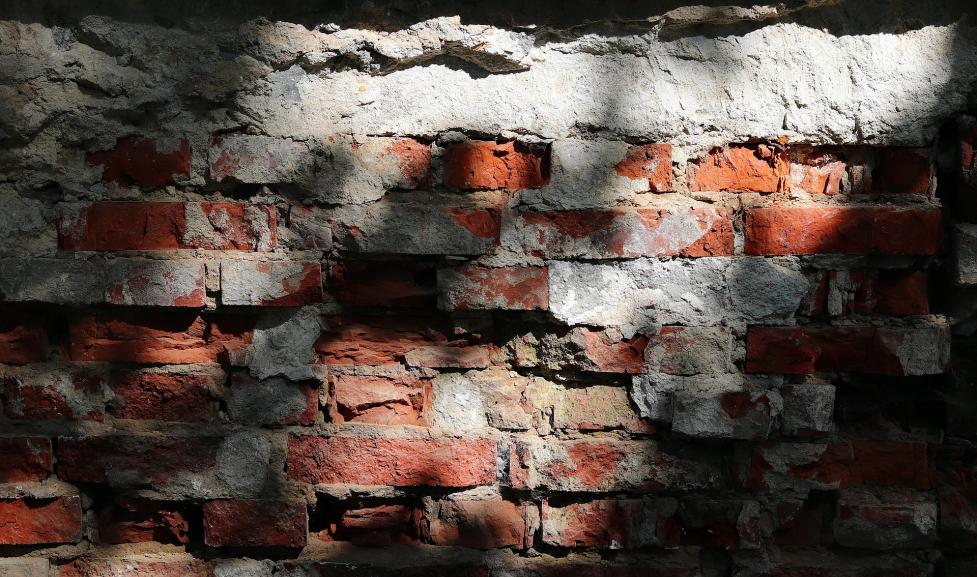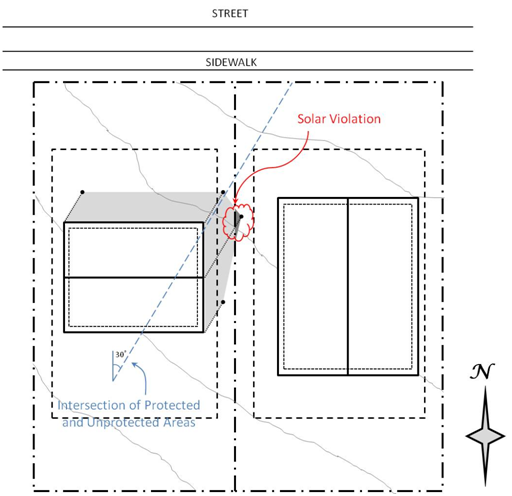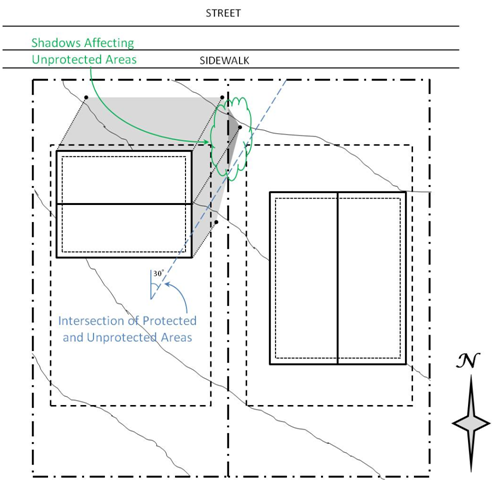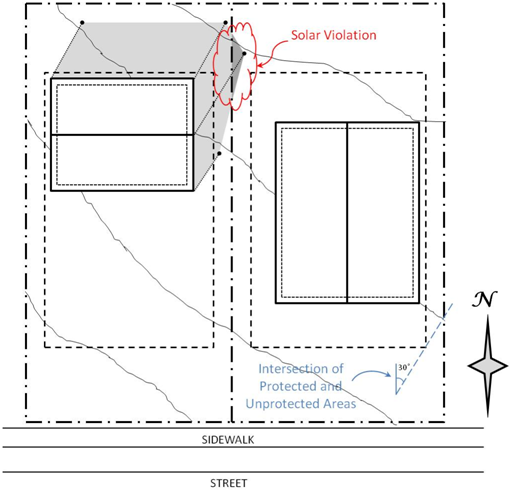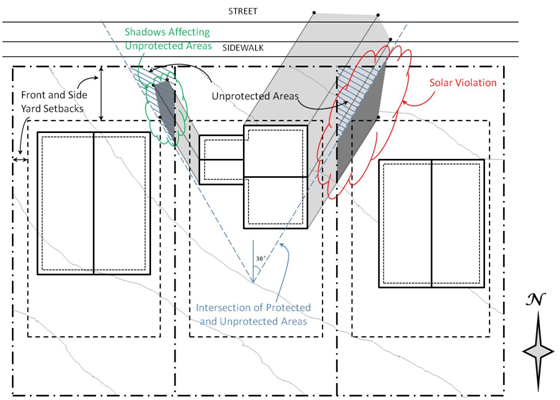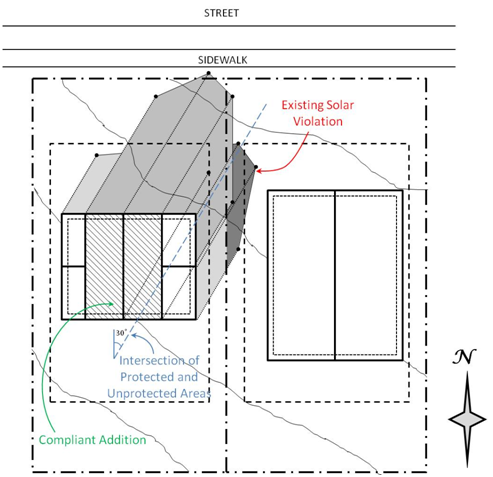In response to the diminishing supply and increasing cost of conventional energy sources, the City of Boulder enacted regulations to protect the use of solar energy systems on private property. The solar access regulations can be found in section 9-9-17, BRC 1981. These regulations limit the amount that new construction and additions can shade adjacent properties.
When applying for a building permit for new construction or an addition, it is necessary to prepare a solar analysis demonstrating compliance with the solar access regulations and to submit the solar analysis and supporting documentation with your building permit application materials.
Step-by-step instructions for preparing a solar analysis are provided in the Solar Access Guide.
Unique circumstances exist that are not specifically addressed in the guide. Additional frequently asked questions are addressed below. If you have questions during the review process contact your case manager and for additional questions please contact a specialist to discuss your proposal.
